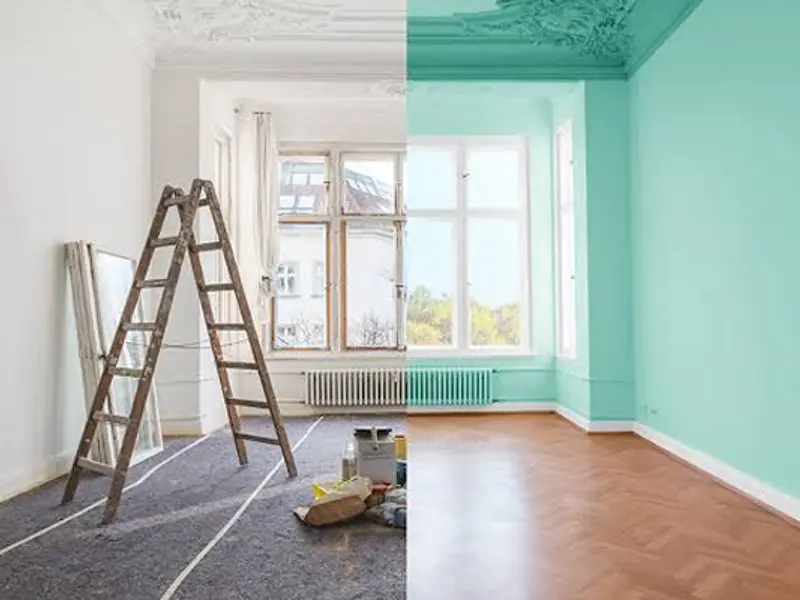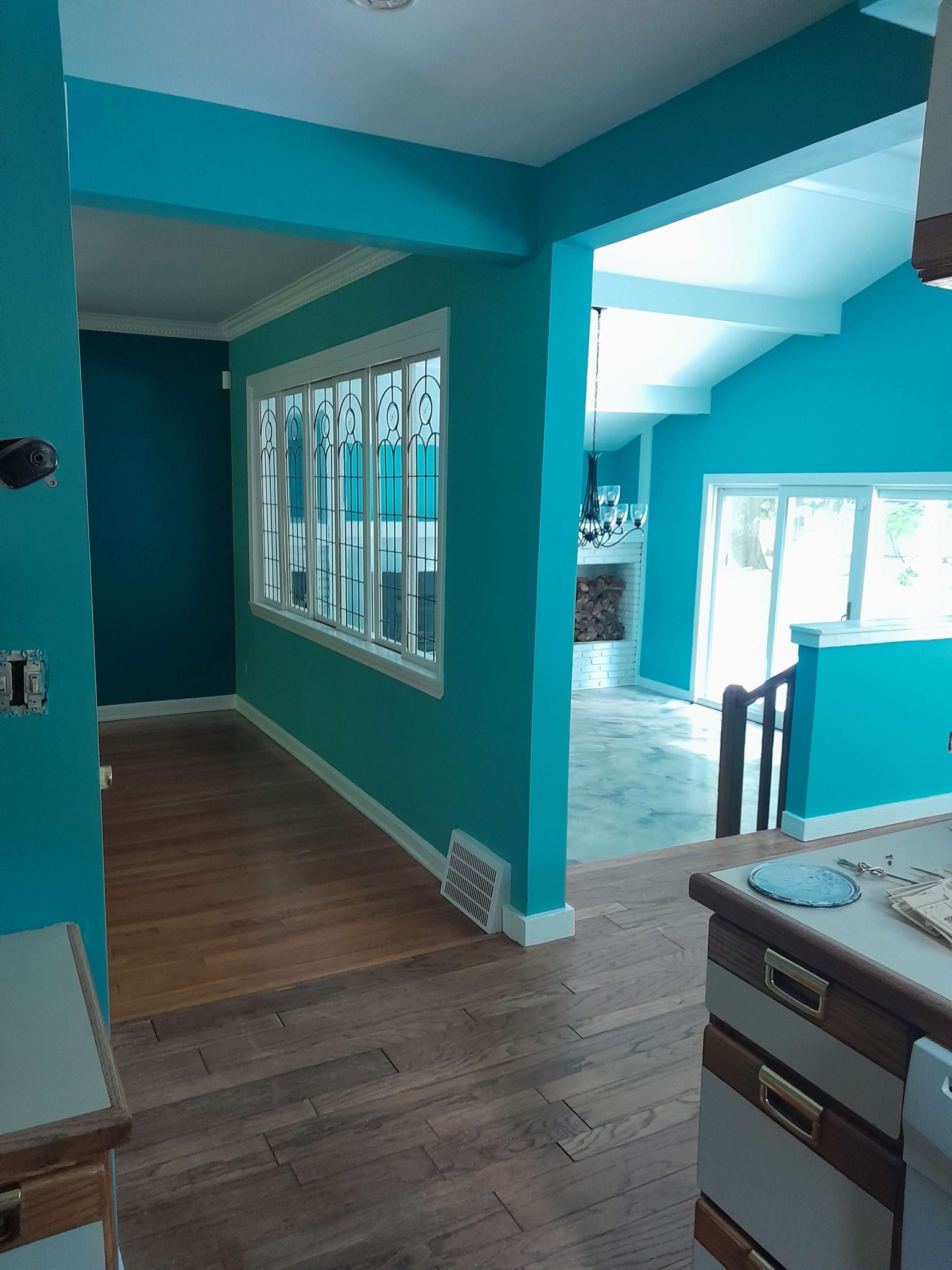Revitalize Your Space With Exterior And Interior Home Paint
Renewing your area through both interior and external home painting is a strategic approach to improving your home's overall atmosphere and market value. Recognizing the lasting advantages of quality paints goes beyond aesthetics; it includes considerations of sturdiness and upkeep.
Advantages of Home Paint
Transforming a home's appearance through painting not only boosts its visual charm but also offers significant practical advantages. A fresh layer of paint functions as a protective obstacle against environmental elements, such as dampness and UV rays, which can result in damage with time. This safety layer is especially crucial for outside surface areas that encounter the brunt of the climate.
In addition, indoor painting can boost air high quality by utilizing low-VOC or zero-VOC paints, which reduce damaging exhausts and promote a much healthier living setting. This is particularly beneficial for families with little ones or people with respiratory concerns.
Additionally, house paint can increase residential property value. A well-maintained home with a contemporary color combination attracts prospective purchasers, making it a sound investment for property owners seeking to offer. Routine paint additionally shows a feeling of treatment and interest to information, boosting the general marketability of the residential or commercial property.
Last but not least, paint allows homeowners to share their individual design and create a welcoming environment. Whether updating obsolete colors or revitalizing discolored walls, paint can renew a room, making it feel new and inviting. On the whole, the benefits of residence paint are both visual and practical, making it an essential facet of home upkeep.

Choosing the Right Colors
Picking the ideal colors for both exterior and interior home paint is an essential element of boosting a home's visual charm and worth. Shade options can considerably influence the understanding of room, mood, and architectural attributes. When thinking about outside shades, it is important to consider the surrounding environment, neighborhood looks, and any kind of property owner association standards. Earthy tones, for example, can create a harmonious mix with nature, while brighter shades might give a modern pop that sticks out.
For interior rooms, colors should be chosen based upon the feature of each room. Softer shades promote peace in rooms, while vivid shades can energize living locations or playrooms. Florentina’s Painting LLC Interior Painting. Additionally, consider just how natural light interacts with shades throughout the day; a shade may show up different under differing lighting problems
In addition, it's beneficial to develop a cohesive color combination that streams throughout the home, linking various areas while enabling specific expression in each area. Utilizing shade swatches and samples can aid in envisioning the last result, making sure that your choices straighten with your vision and enhance both the exterior and interior allure of your home.
Interior Painting Techniques
When it pertains to performing an effective indoor paint task, recognizing numerous techniques is important for achieving a polished and expert coating. One fundamental method is the "cut-in" approach, which involves making use of a brush to repaint edges and corners before rolling the walls. This produces tidy lines and prevents roller marks.
An additional efficient strategy is my explanation making use of different roller nap lengths. A much shorter nap is suitable for smooth surface areas, while a longer snooze can aid cover distinctive walls, ensuring an even application of paint. In addition, using a "back-rolling" method after splashing can assist to equally disperse paint and boost adhesion.
For even more detailed styles, strategies such as stenciling or sponging can include depth and character to a space. These methods require precision and practice but can yield magnificent outcomes.

Lastly, appropriate surface prep work-- consisting of cleaning, fining sand, and priming-- is vital to any paint technique. This not just ensures better paint adherence yet also lengthens the life of the surface. By grasping these indoor paint methods, home owners can change their areas with confidence and creative thinking.
Outside Paint Fundamentals
Successfully taking on an outside painting task needs mindful preparation and focus to detail. The primary step is to select premium paint that is especially developed for exterior usage, guaranteeing durability versus the elements. Take into consideration the environment of your region, as different paints provide differing levels of wetness resistance, UV cabinet staining company near me defense, and temperature versatility.
Fix any damages, such as cracks or openings, to create a smooth substrate for paint. Priming is typically advised, particularly for bare or formerly unpainted surface areas, as it improves attachment and improves the paint's long life.
Pay interest to the application technique; functioning in manageable areas and applying even coats will generate optimum outcomes - Florentina’s Painting LLC Interior Painting. Suitable problems consist of reduced moisture, moderate temperature levels, and very little wind, which can influence drying out times and repaint adherence. By concentrating on these essentials, you can ensure a successful and visually pleasing outside painting task.

Maintenance Tips for Long Life
Normal upkeep is crucial for protecting the durability and appearance of both exterior and interior paintwork. To ensure your paint lasts, start with routine assessments. For external surfaces, check for indications of peeling off, fracturing, or fading, and address these problems quickly to stop further damages. Tidy surfaces consistently to remove dirt, mold, and gunk, utilizing a light detergent and soft brush as needed.
For indoor rooms, keep a consistent temperature level and humidity degree to minimize paint wear and tear. Dust walls and baseboards occasionally and consider using touch-up paints to cover small scuffs or scrapes.
Furthermore, evaluate and preserve caulking around doors and windows; changing worn or split caulk will stop wetness invasion, which can compromise paint quality. When painting, select high-quality paints that supply far better durability and resistance to ecological factors, ensuring a longer-lasting coating.
Final Thought
In verdict, house painting serves as an effective tool for renewing both the interior and exterior of a home. Applying upkeep strategies can prolong the life Get the facts of the paint, securing the investment made in the revitalization procedure.